Visit the beach this summer and you will likely get quite an eyeful of skin. The string bikinis, thongs, and skimpy tops leave very little to the imagination. If it is a public beach, chances are there are no rules or regulations dictating how much – or how little – beachgoers should be covered.
A century ago, that wasn’t the case. Strict modesty laws were in place in most beachfront communities and public pools. Many even employed “bathing suit” patrol officers who were tasked with combing the beach for violators. Let’s look at some of the modesty rules governing swimwear of the past … and some of the violators.
Not Vatican-Approved
In the late 1800s and early 1900s, the Vatican deemed swimwear to be sinful and wicked. Good Catholics were fearful of incurring the wrath of the church if they dared to wear something other than typical street clothes while swimming.
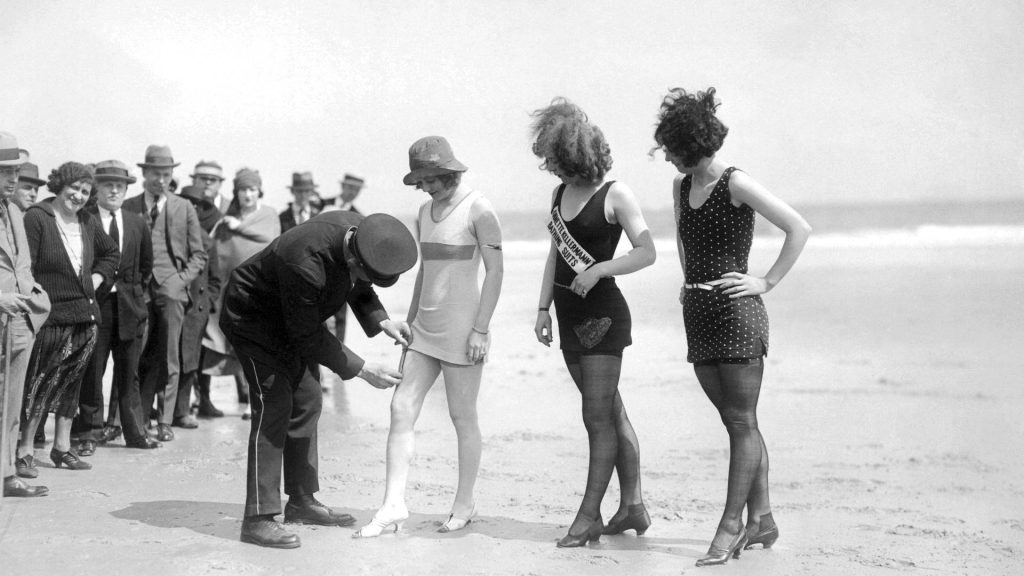
In those days, women wore floor-length skirts and dresses with multiple layers of fabric. As you can imagine, this didn’t make it easy for them to swim in their clothing. But they had no other option if they wanted to cool off on a hot day … swimsuits were legally banned in many European countries, including France, Portugal, Italy, and Spain. They were even banned in the United States and Australia for decades.
Swimming as a Legitimate Sport
By the end of the 1800s, swimming was emerging as a legitimate competitive sport. In fact, swimming was one of the original four sports when the modern Olympic Games were first held in 1896. The athletes, however, were all men.

Competitive swimming was a cumbersome activity for women. The “proper” swimming attire of the day for women included long-sleeved, one-piece dresses with long skirts. Moreover, female swimmers were expected to wear stockings underneath their bathing suits. It was impossible to clock competitive swimming times with all that wet cloth dragging them back.
A Daring and Scandalous Australian Swimmer
Annette Kellerman was serious about her swimming career. The Australian swimmer designed a swimming garment that was sleeker and more fitted … one that eliminated the excess drag and allowed her to speed through the water much faster.
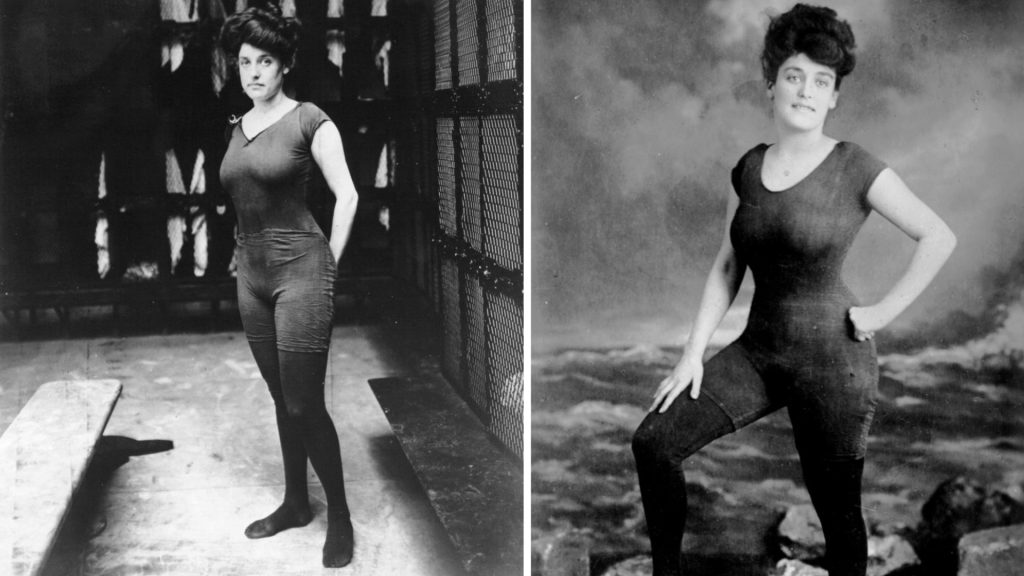
The swimsuit Kellerman created for herself is quite modest by today’s standards, but in 1907, it caused a scandal. She debuted her swimming attire that year in Boston and beachgoers were shocked to see her wearing a sleeveless, snug-fitting outfit out in public. She was promptly arrested on charges of public indecency.
Kellerman Was Put on Trial for Wearing a Bathing Suit
At her trial, Annette Kellerman pointed out that the strict, old-fashioned modesty laws in the United States were much more prudish than those in her native Australia. She also argued that these laws unfairly hindered her from excelling in her sport. In 1907, the first wave of the women’s rights movement was picking up steam in the U.S. and Kellerman skillfully used this to her advantage.
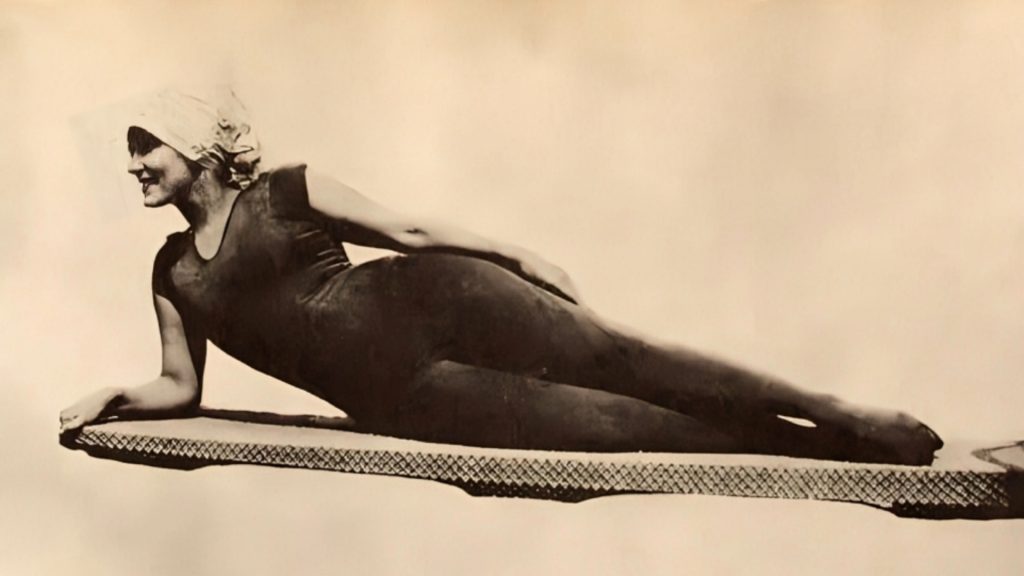
She argued that the rights of women were violated by outdated modesty laws and advocated for women to be allowed to enjoy the sport of swimming by being allowed to wear less restricting garments. And she won her case! Kellerman then went on to offer her own line of modern bathing suits for women.
The “Bathing Suit” Patrol
After Kellerman’s big win, women’s swimwear got progressively skimpier. And by skimpy, I mean they showed off the wearer’s knees and shoulders! Many beachfront communities had a “bathing suit” patrol – one or two officers who were tasked with roaming the beach in search of immodestly dressed women.
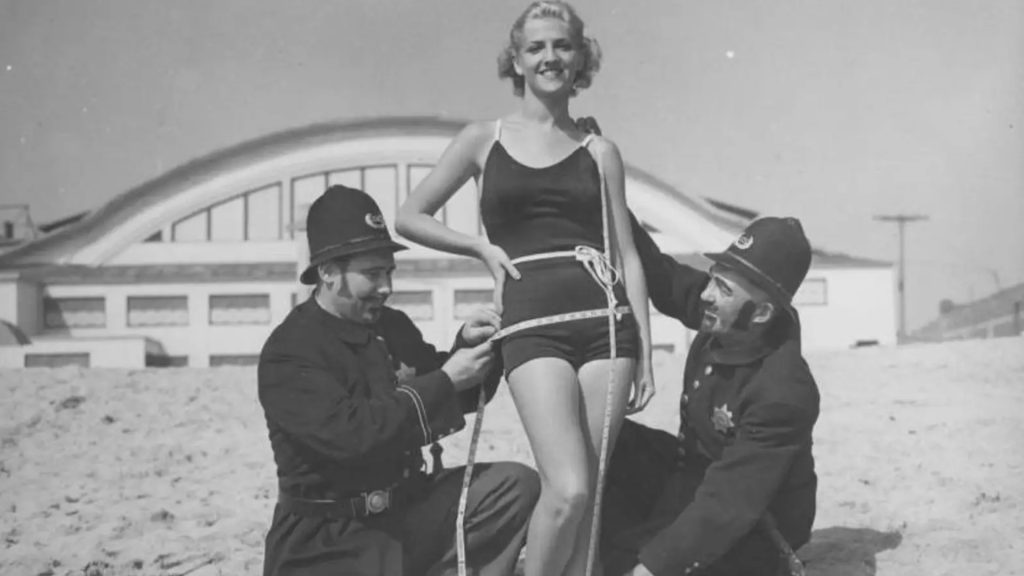
The “bathing suit” patrol officers had the power to issue citations for violators, but in general, their goal was to shame and embarrass young women by publicly measuring their swimwear to make sure it met the established standards. Often, a crowd of onlookers watched as the officer pulled out a tape measure to check the length of a woman’s skirt. If it was too short, the officer scolded her, humiliated her, forced her to cover up, sent her home, or issued her a fine.
Jantzen’s Tank Suits
Portland-based company Jantzen introduced their modern style of swimwear in the 1920s. In fact, Jantzen is credited with coining the term “swimming suit.” Prior to this, beach garments were called “bathing suits.” Jantzen wanted to move away from the idea of women passively wading in the water and allow them to embrace the activity of swimming.
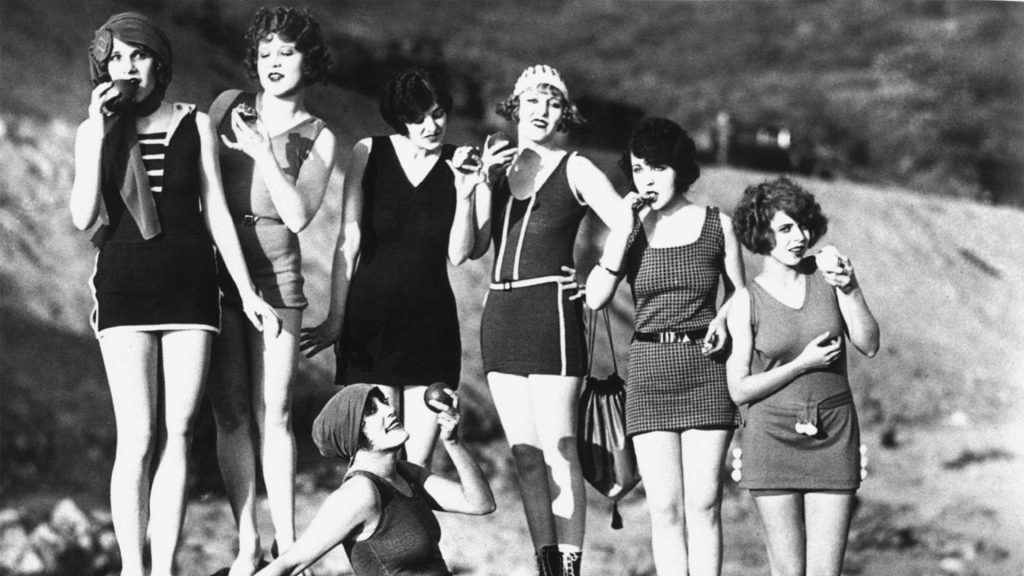
Jantzen’s swimming suits were extremely popular in the Roaring Twenties. They were tank-style suits forming a short tunic. Women wore matching shorts underneath them. The fabric was a form-fitting ribbed Jersey that provided a clean, smooth silhouette.
The “Beach Tailor” … The “Bathing Suit Patrols” Best Friend
The city of Chicago also experienced a modesty problem at its Lake Michigan beaches. The “bathing suit” patrol officers at some of the city’s beaches, including Clarendon Beach, came up with an ingenious solution to solve the modesty issue – the “beach tailor”.
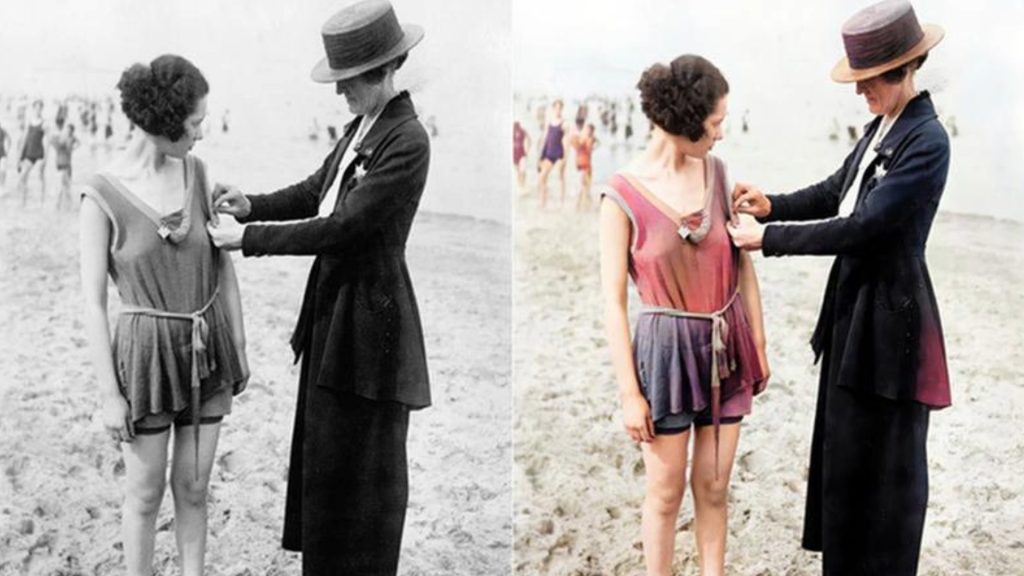
A “beach tailor” was a quick and experienced seamstress armed with fabric, needle and thread, and scissors. When the “bathing suit” patrol officers found a woman wearing an outfit that violated modesty standards, the “beach tailor” was summoned. She would quickly stitch a row of cloth to the bottom of the violator’s skirt to make it longer. She also added fabric to low necklines and sewed up armholes that were too revealing.
“No Gorillas on Our Beaches“
Not all the swimwear modesty laws pertained to women. Men were also expected to maintain modesty while at the beach and there were local laws passed to fine men who violated these rules. Men had to keep their shirts on.
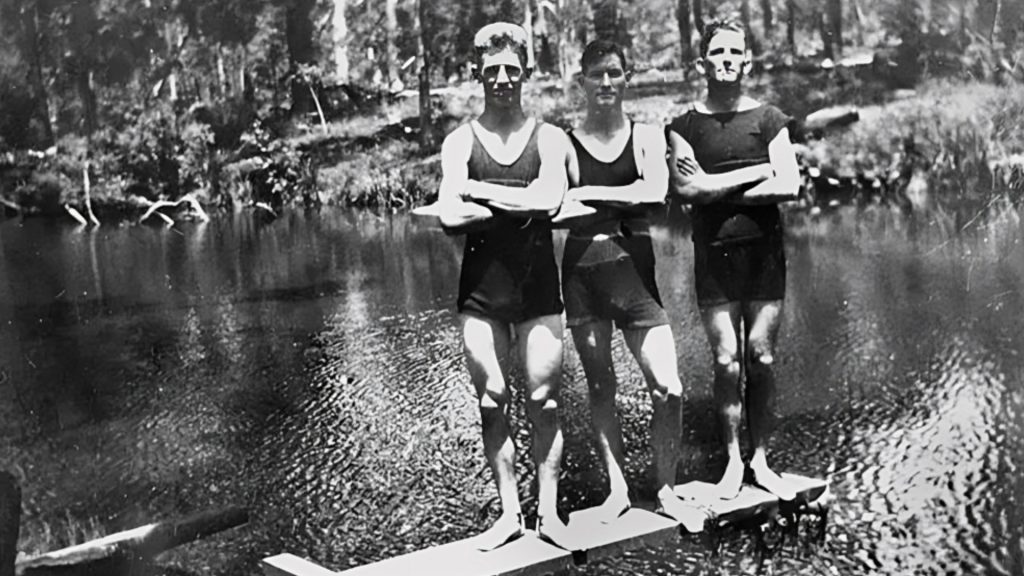
In Atlantic City, New Jersey, for example, the city council announced that there would be “no gorillas on the beach.” Once Atlantic City made it a local law requiring men to wear tops while swimming, most of the other beach communities around the country followed their lead. Topless men could be fined and ticketed.
Modesty Laws Did an About-Face in 1946
Throughout the 1920s and 1930s swimwear designers continued to push the boundaries of modesty. Shoulder straps got thinner, and bottoms got shorter. Beachgoers seeking the ultimate tan, slipped the straps off their shoulders and lifted their skirts higher … fashion designers took notice. And so did at least one mechanical engineer.

Louis Reard – a French mechanical engineer, not a fashion designer – created the first two-piece bikini swimsuit in 1946 and unveiled it to the public that summer. The unconventional and belly-baring swimsuit slowly caught on. In a short decade and a half, it was the most popular style of swimwear. It was so popular, in fact, that the decades’ old modesty laws were abolished.






